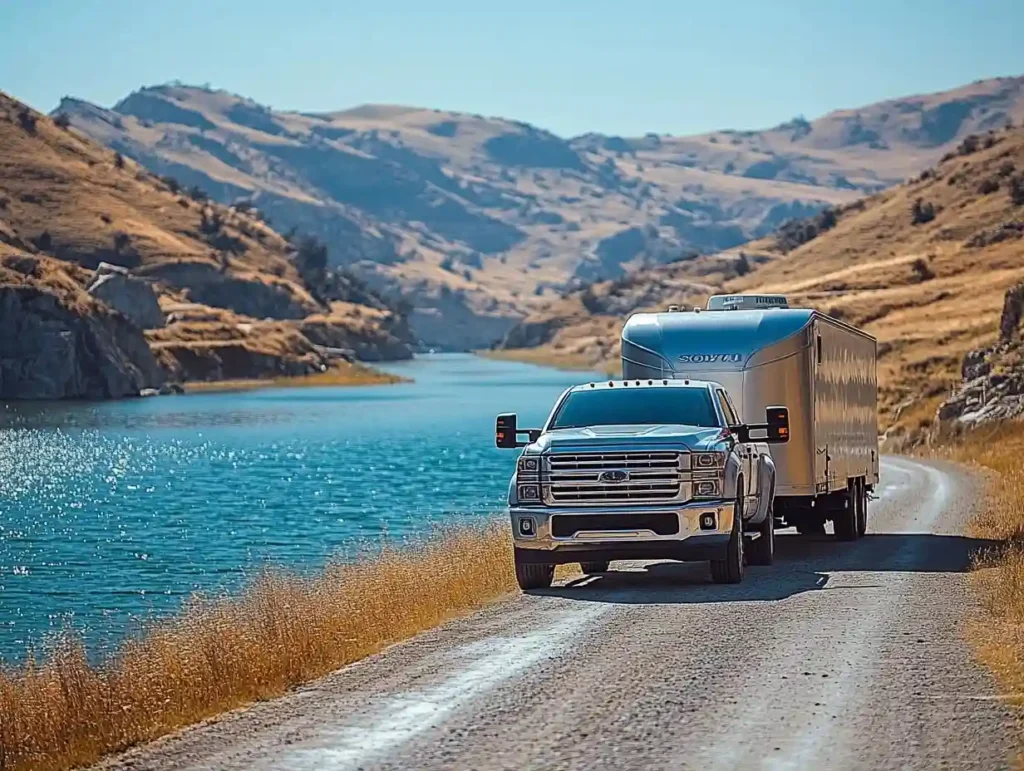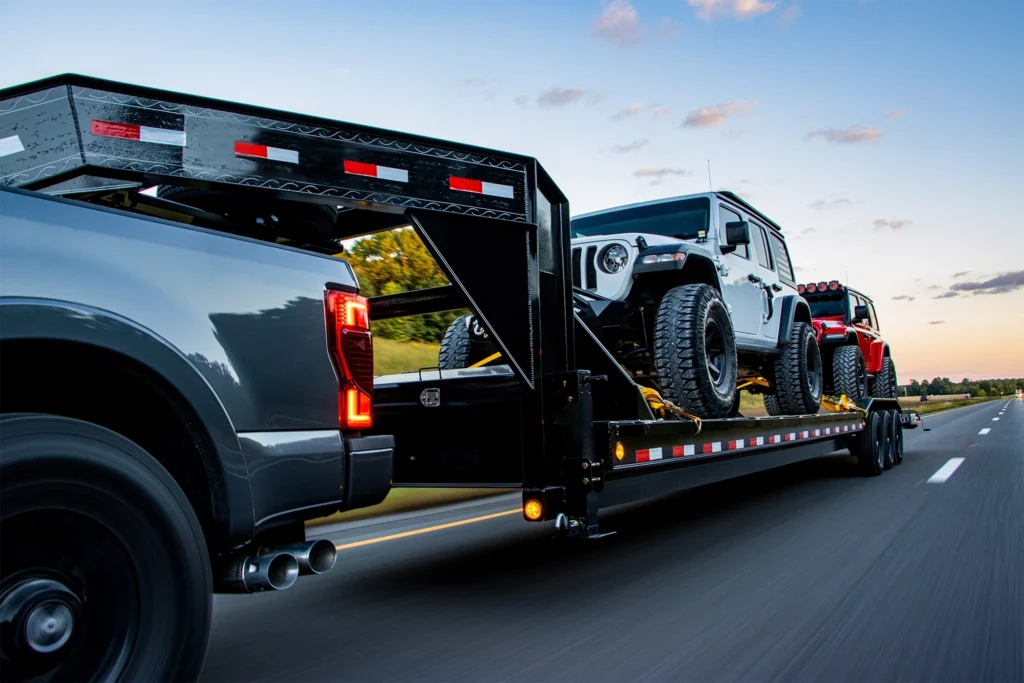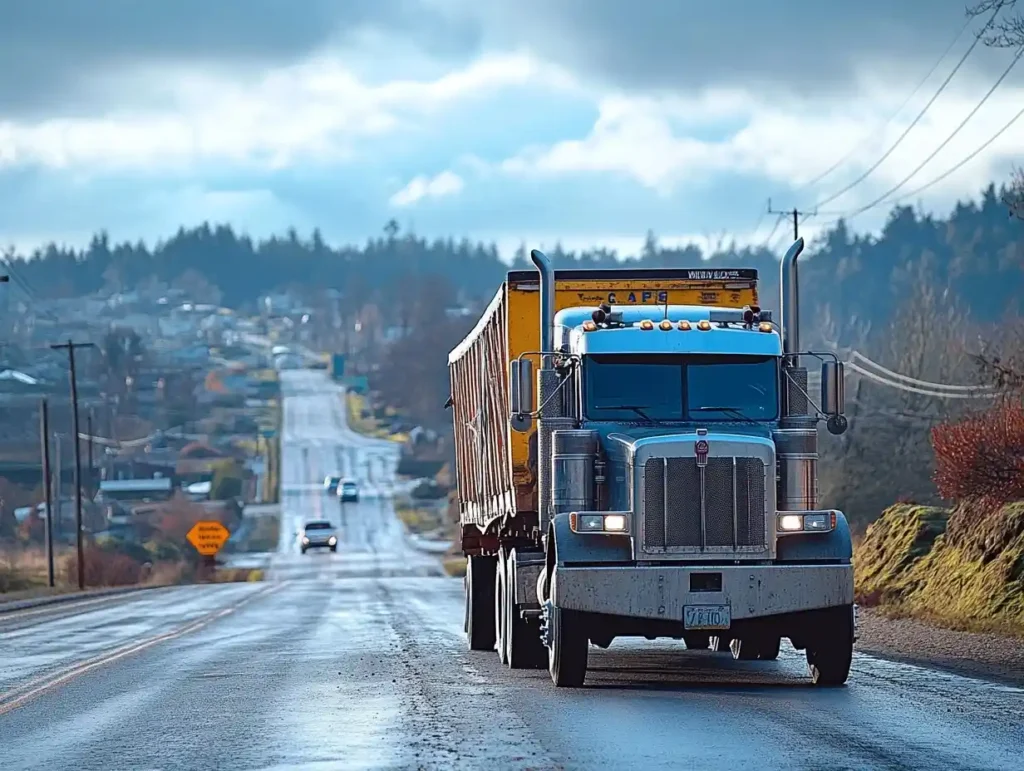When you are towing another vehicle there are several important things to consider. Understanding terms that are specific to the capacities of your vehicle is essential, to stay within your vehicle’s towing limits and take necessary safety precautions to maintain control while towing.

In this article, we discuss some of the basic, yet extremely important, towing terms that apply to maintaining safety when towing.

Table of Contents

Important Towing Terms
Here are some of the most important terms, with definitions, you should understand when towing:
Gross Vehicle Weight Rating (GVWR)
GVWR indicates the value specified by the manufacturer as the loaded weight of a single vehicle. This is the maximum weight a vehicle can safely carry, including passengers, cargo, fuel, and tongue weight.
Gross Axle Weight Rating (GAWR)
GAWR indicates the value specified by the vehicle manufacturer as the load-carrying capacity of a single axle system, as measured at the tire-ground interfaces.
Towing Capacity
The maximum weight a vehicle can tow without exceeding its weight limits.
Tongue Weight
The amount of weight a trailer transfers to the towing hitch.
Gross Trailer Weight (GTW)
The total weight of a trailer and its cargo.
Payload Capacity
The amount of weight a vehicle can carry in addition to its own weight.
Curb Weight
The weight of a vehicle, including fluids, but excluding passengers or cargo.
Conventional Towing
Using the tow ball of the vehicle to tow a load.
Weights and Weight Ratings

It's essential, when towing, to understand the weight ratings for your vehicle. Two of the most important things to consider when towing a vehicle are 1) what your capacity is and 2) proper weight distribution on the trailer. Gross Vehicle Weight Rating (GVWR) and Gross Axle Weight Rating (GAWR) are weight ratings for vehicles that manufacturers specify to ensure safe operation.
Gross Vehicle Weight Rating (GVWR)
GVWR is the value that the manufacturer has specified as the loaded weight of a single vehicle. This is the maximum weight a vehicle can safely carry when fully loaded. It includes the weight of the vehicle, passengers, cargo, fuel, and trailer tongue weight.
Why is GVWR Important?
First, GVWR is important because of safety. Exceeding the GVWR can make a vehicle unsafe and cause damage.
Secondly, exceeding the GVWR can result in tickets, criminal charges, and insurance requirements.
Thirdly, GVWR helps determine a vehicle’s towing capacity.
How to Find GVWR
You can find the GVWR on the vehicle’s Safety Compliance Certification Label located on the driver’s side door.
If the label is missing, you can check the owner’s manual.
Gross Axle Weight Rating (GAWR)
GAWR is the maximum weight that can be placed on the vehicle’s front or rear axles. The vehicle manufacturer gives each axle its rating. FR is the front rating and RR is the rear rating. The gross axle weight rating accounts for passengers and cargo, as well as the possibility of a trailer in tow. Exceeding the GAWR can be detrimental to the vehicle’s axles.
Gross Combined Weight Rating (GCWR)
GCWR is the maximum weight of your vehicle with a trailer attached, as determined by the vehicle manufacturer. Combined weight means the weight of both the tow vehicle and the trailer together, including any cargo or load placed in either vehicle. The rating for gross combined weight or gross combination weight is determined for the vehicle based on the strength of its frame, suspension, axles, and other towing-related components.
Gross Trailer Weight (GTW)
GTW is the total weight of the trailer and its cargo. It can be determined by putting the fully loaded trailer on a vehicle scale or using a trailer weight scale. Unlike GVWR, GCWR, and others, gross trailer weight is not a prescribed, set rating, but a descriptive measurement. GTW is the actual weight of the trailer, independent of its given rating. The GTW should never exceed the GVWR.
Curb Weight
Curb weight is the total weight of your vehicle apart from any passengers, cargo, or non-factory items. Curb weight includes the weight of gasoline, oil, and other fluids necessary for operation. The curb weight is the weight of the vehicle as it sits parked at the dealership.
Dry Weight
Dry weight is the total weight of your vehicle without passengers, cargo, or fluids. Dry weight is similar to curb weight except dry weight does not include the weight of automotive fluids needed for operation. In contrast to dry weight, GVWR is a weight limit specified by the vehicle manufacturer that dictates how heavy the vehicle can safely be.
Payload Capacity
Payload is the weight of your cargo. It is the maximum amount of weight a truck or other vehicle can haul, in terms of cargo and passengers, specifically in the truck cab, truck bed, or cargo area. The payload is the actual cargo itself in the truck bed. The payload capacity is how much cargo the truck can haul in terms of weight. Note that the payload weight includes the tongue weight of the trailer if a trailer is hooked up.
Towing Capacity
Towing capacity is the maximum amount of weight your vehicle can tow when pulling a trailer. It is determined by the vehicle manufacturer and takes into account the GVWR, GAWR, GTW, and more. Essentially, the towing capacity is how heavy your trailer can be. Always observe the maximum towing capacity in any towing situation. Exceeding this capacity is extremely dangerous. Do not tow more weight than your vehicle is rated for.

